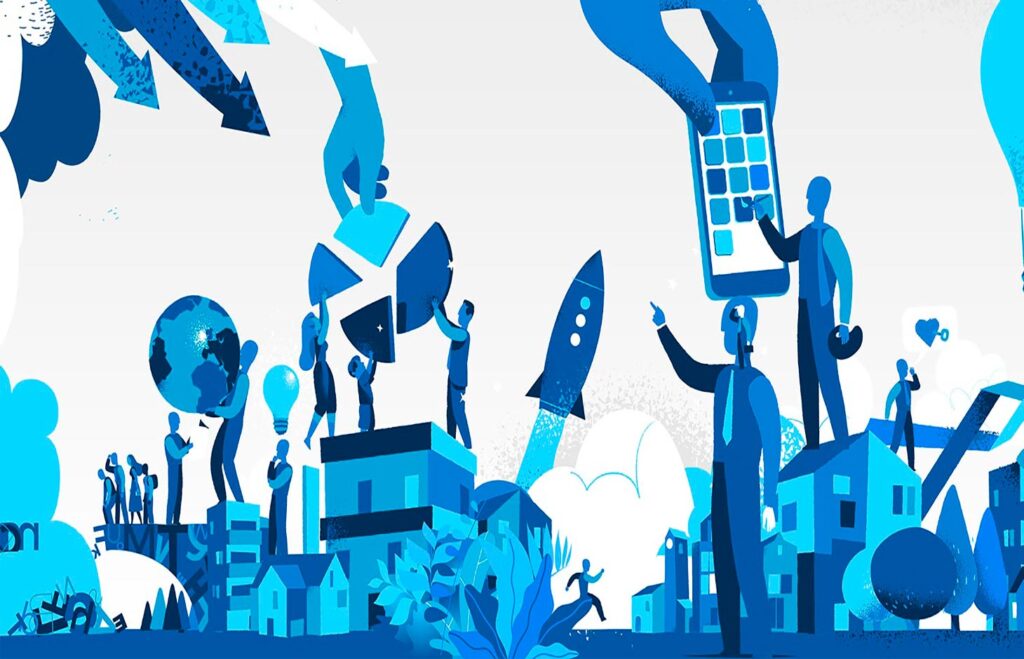In 2007, five college students combined forces to bring one of their favorite pastimes to the rest of the world: gaming.
Over the years, Zynga has seen many changes in its quest to bring addictive games to the world, from Texas Hold’Em Poker to Farmville.
And while it has had lows—including an 18% layoff in 2013—Zynga is soaring in 2020. Stocks nearly doubled in March, and then doubled again in August. The sky’s the limit, as this gaming business eyes more acquisitions, plans new games, and taps into new markets.
What’s most remarkable about Zynga, though, is that while it’s estimated to cap 2020 with total bookings revenue of more than $2.2 billion, the cost of its products to users is zero. Zilch. Free.
Free. It’s a word that has captivated people’s attention since the dawn of time. It makes the blasé interesting, and the interesting irresistible.
For SaaS businesses, that—like any traditional business—depend on bringing in income to remain afloat, how can a free product make money? While it may seem like a contradiction in concepts, in reality many businesses are highly successful at it.
For example, Zynga’s revenue source is largely in ads. In November, the business reported its ad revenue and bookings were up $67 million over the previous year.
“In the quarter,” they explained in their Q3 2020 Letter to Shareholders, “we experienced steady sequential growth in advertising yields primarily driven by strong advertiser demand.”
Creative SaaS businesses focus on unique subscription revenue models
The subscription revenue model has been around for decades, but the rise of SaaS is credited with spearheading the largest transition from the traditional one-time purchase model to the subscription business model.
Now, businesses in virtually all industries have discovered ways to apply this model, ensuring predictable subscription revenue streams.
But, as subscriptions have become the norm, so has subscription fatigue—where consumers are bombarded with so many subscriptions, the concept is almost a deterrent. Where one $10 monthly charge was palatable, 4 or 5 subscriptions with the same monthly price tag may be too much. And the price tag is obviously much higher in the B2B world.
So, how do SaaS businesses find a competitive edge in a sea of subscriptions? Here are some unique subscription revenue model ideas businesses are leveraging to thrive in the crowded subscription landscape.
1. Income generated by ‘free’ usage
There are other creative ways to charge users without breaking the bank. Robinhood, for example, keeps its investment service app running strong largely by collecting on the interest its users earn.
While other investing platforms generate income by charging a commission for making investments, Robinhood disrupted the traditional model by charging its users differently—in a way that’s barely noticeable.
How exactly does this work? In essence, revenue comes from uninvested funds in a customer’s account, mainly in the form of generated interest.
According to its site, “Robinhood Securities generates income on uninvested cash that isn’t swept to the Cash Management network of program banks, primarily by depositing this cash in interest-bearing bank accounts.”
Another significant revenue stream the business capitalizes on is collecting the rebates offered by market makers or trading venues. It’s small at around $0.00026 per dollar traded in rebates, but it adds up without users even noticing.
2. Add-ons boost freemium subscriptions
Some businesses have found great success by offering their product for free, while enabling users to make additional purchases to enhance their product.
For example, Skype’s product is entirely free to use, with no limitations. Businesses have used this as their go-to for instant messaging, file exchanging, and user-to-user phone or video calls for quite some time. However, the business’s revenue stream is through add-ons, or extras purchased on a subscription basis.
If a Skype customer wants to call a non-Skype user, they can purchase Skype credits—one-time purchases—or a subscription that gives them ongoing access at a lower price than the credits but on a continual basis. From there, additional subscriptions are available to make calls to other countries.
In this instance, Skype taps into multiple user preferences. Some may use the features so rarely that a one-time purchase makes more sense. But for those who use it often or prefer the convenience of having this available at all times, a low-cost subscription is ideal.
3. One-time purchases are used to enhance a strong base
For the first several years Shutterstock was in business, the media company operated with a strictly subscription revenue model. For a set fee, customers could download a certain number of photos every day within that monthly subscription window.
Two years after it held the monocle of “largest subscription-based stock photo agency in the world”, it took a step beyond subscriptions to offer a la carte pricing in 2008.
Other businesses have followed Shutterstock’s business model, but consumers have continued to feed ideas to the stock media giant, and they have branched out much further than images with illustrations, video, and music clips.
4. There’s strength in (referral) numbers
Customer Acquisition Cost (CAC) is what it costs a business to convert a prospect into a customer—a lead into a paying user. This is a critical metric for SaaS companies. The CAC can determine the fate of your business.
But what if you can reduce or even bypass the expense of bringing in new customers? It’s worth it to consider the benefits of a referral program.
According to The Drum—a Europe-based media giant—a successful referral program can increase new customer acquisitions by 30% while also doubling overall customer lifetime value (LTV).
Dashlane, for example, takes its referral program extremely seriously. One of the leaders in password management, Dashlane has a free option but also offers premium features, such as cross-platform syncing.
It has a robust referral program though, providing up to two years of premium access to users who make successful referrals—6 months per referral at a time for both the referred and referral users.
5. Ask and ye shall receive
There are other ways to bring in revenue from free offerings: just ask.
Freeconferencecall.com is one of the leading services supporting distance meetings—once a nice-to-have option that became mandatory for many businesses in 2020.
In fact, FreeConferenceCall.com noted that in some areas, it saw a 3,000% increase in users.
So, how does it make money if it doesn’t have a premium option for its basic calling plans? By encouraging users to pay what they can when they can.
“It is our mission to make sure everyone, everywhere has access to free, world-class audio and video communications,” it says on the website. “If you’d like to help us achieve that mission, we just ask that you pay what you think is fair.”
As any successful business knows, sometimes it needs to move beyond its base as user demands change. In 2015, FreeConferenceCall.com launched a premium service called StartMeeting, a platform that incorporates video collaboration as well for larger businesses that need additional features, such as screen sharing and business instant messaging.
StartMeeting also offers additional cloud storage space, company branding, custom greetings, and more for additional monthly fees.
Supporting your unique subscription revenue model
Although each of the above examples has a different revenue strategy, together they share one common thread: each revenue stream is fluid and can change dramatically from one billing period to the next. And this works well because from the customer perspective, the future of SaaS lies in flexibility and agility.
Disrupting the traditional business model isn’t enough—a successful SaaS business also needs to be able to manage these changes.
And changes, as evidenced by the growth of FreeConferenceCall.com, don’t necessarily come in a controlled manner, but potentially with a tsunami of users. A large user base of your free product also means a lot of leads that could eventually choose a premium paid option.
So how do you prepare for the future?
Digital transformation—adopting technology to optimize and automate once-manual processes—is key to growth. With an agile infrastructure in place, your business can quickly alter its course as needed, whether it’s a rapid release of new features to outpace the competition, real-time adjustments to pricing strategy and structure, or the ability to support a large acquisition of new customers.
As Mark Pincus, one of Zynga’s cofounders concluded, “Not having a clear goal leads to death by a thousand compromises.”
Are you ready to capture the success of your unique business model?








